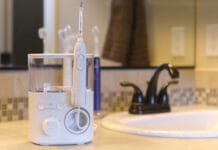Join us as we embark on a series, Social Media for the Dental Professional. In this series, we will discuss what not to do and say, how to create and maintain a professional online image, how to use social media to advance your career, and what the future of the digital dental world looks like.
As a millennial hygienist, social media is a constant presence in both my personal and professional life. Undeniably, I spend too much time scrolling through never-ending newsfeeds, attaching superfluous hashtags, and snapping photos with lifespans shorter than that of a mayfly. I also, however, devote copious amounts of time as a silent bystander, lurking within various online communities simply to witness the dialogues and issues of the day.
More than ever before, the dental industry relies on media platforms for marketing strategies, employee training, scouting for potential team members, and professional networking and development. Participating in social media is no longer merely a fun thing to do in your free time— it is now another obligatory tool for professionals and organizations alike. Just like a first impression, your online image can make or break how you appear in the eye of the beholder.
We’ve all heard the horror stories of employees getting fired because of social media incidents involving gossip, complaints, and patient privacy violations. We’ve all had to deal with negative comments, miscommunications, and the inevitable virtual “disagreement.” The most important thing to remember is this: there are many people— perhaps even your close friends and colleagues— that do not know how to use social media appropriately. Unfortunately, sometimes these people may even have the loudest voice. Let their example be a gentle reminder that every time you participate in online communities, you leave a forever permanent footprint. Even though you may be in your pajamas and on your second glass of wine, you still must present yourself as if you are alert, in a crisp blazer, and sipping a morning coffee. Image is everything, and on social media your faux image is everything.
For the last few years, my professional endeavors have focused on refining both the online presence of various dental organizations as well as my own professional e-identity. A simple thing like changing my personal profile picture to a professional headshot has paved the way for new opportunities and roles which I had never even previously considered. I am mostly proud of my online self, but I’ve also made a few mistakes along the way. For instance, there was that one time— merely to gauge contemporary opinion— I created a post advocating for independent hygiene practice in a group comprised primarily of dentists. Within days there were over a thousand negative and challenging comments. Was creating that post a mistake? While I don’t have regrets, I do chalk it up as a “learning experience.”
Remaining self-aware of your online image is critical. Take a moment to review the following suggestions and evaluate your current digital self— not only to protect yourself but also to create an e-identity of which you can be proud.
What Not To Do
- Do not participate in every online dental community you come across
Each dental community, whether a Facebook group or chat forum, functions specifically for those who share a common interest. Be picky about what groups you join and choose to leave if it doesn’t meet your expectations.
- Do not comment or email from your phone
We all use our mobile devices to comment and send emails on the fly. But take a second to admit how difficult it is to use your thumbs to type more than just a few words! To compensate, we shorten our thoughts, create incomplete sentences, and disregard typos and punctuation—all things which impact your audience’s interpretation. Also, tools which are meant to be helpful, like autocorrect and text-to-speech, are often not and simply create more confusion.
- Do not complain about your employer or colleagues
Do yourself a favor and make it a rule to complain only in person and to neutral, uninvolved parties so that there is zero chance of a digital trail.
- Do not use sarcasm
Sarcasm simply does not translate on social media. Sure, some readers will get it and offer you a cute smiley face emoji, but the majority will not fully understand. This can— and will— reflect badly on you.
- Do not pretend that you are someone you’re not
Curious about what’s happening in a dentist-only group? Do not create a false profile to enter the group. Administrators and moderators keep a close eye on everything that is happening and usually know more about you than you think.
- Do not Like everything you see
Be careful what you Like. That sweet, innocent little Facebook button is so easy and inviting to tap. But remember, “liking” something, even someone else’s neutral comment, leaves a digital footprint and could impact your professional image.
What To Do
- Be choosy about which online community you take part in
Whether it’s a group, a forum conversation, or an entire social media platform, learn to pick and choose which online community will benefit you the most.
- Learn the lingo and rules
Twitter is public. A “closed” Facebook group is not necessarily private. Snapchat isn’t foolproof. Delve into the fine print to know what exactly you are doing and who your audience is.
- Always hesitate before you tap Send
Stop. Read what you wrote. And then read it again, one more time, before you send it irretrievably into the virtual world.
- Beware of trolls and instigators
The unfortunate reality is that there are indeed people trolling online communities who simply love to cause drama and instigate unpleasant situations. Recognize them and do not engage.
- Give yourself an “out”
Have you ever been involved in a social media conversation that you know just isn’t going to lead anywhere good? Give yourself an out and an excuse to remove yourself. For example, I appreciate your thoughts but would like to move on from this conversation. I look forward to potentially discussing this in-person sometime in the future.
- Obtain proper consents
If you want to share a case study involving a real patient, be sure to obtain written permission from both the patient and your employer to comply with proper HIPAA and employer protocol. Also, triple check that there is no identifiable patient information visible within the photos.
So, where do you rate? Take the time to evaluate your online image and reflect on how you want others to see you. Begin making the necessary changes today! In Part 2, we will discuss how to utilize social media to enhance and advance your career.
DON’T MISS: The Many Lives of the Mysterious Full Mouth Debridement












